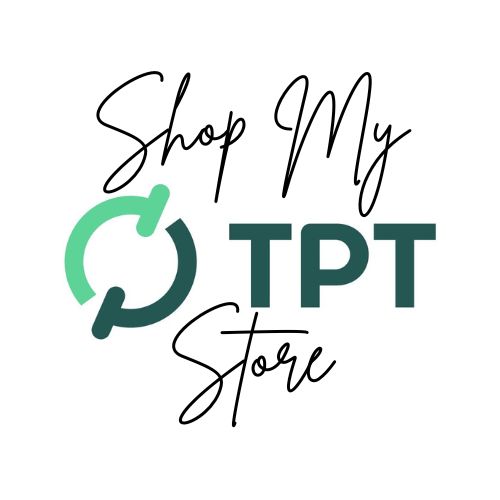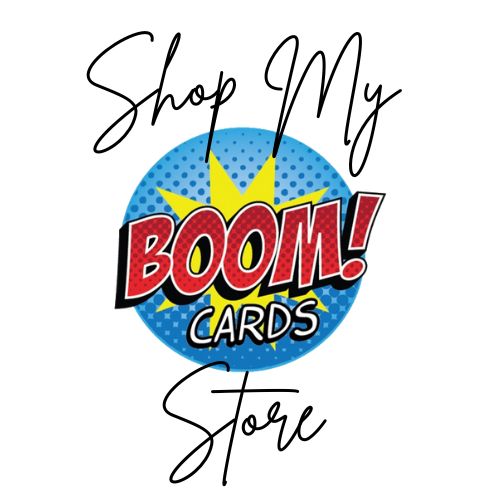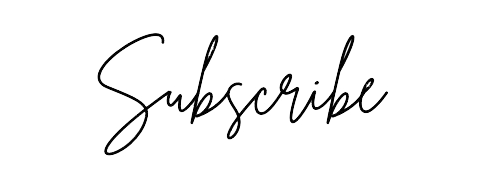Do you have kids who have trouble with scissor skills? Maybe they can’t hold the scissors correctly or cannot rotate the paper. In my job as an itinerant orthopedic impairment teacher, I find that if the reason is orthopedic it could be that they have a weakness in one hand/arm, cannot use one hand/arm at all, or maybe they are missing some fingers or a hand. In this podcast episode, I will share strategies to improve one-handed scissor skills.
It can be frustrating for teachers, and parents when kids struggle with cutting. However, although learning to cut is a foundational fine motor skill in preschool and primary grades, it is not as important in later years. Most adults do not need to do much beyond cutting straight lines unless they have a hobby. So let’s figure out some workarounds to help the student be successful without getting too stressed about it. Also, most kids find a way that works for them, even if they need a friend to hold the paper while they cut.
First, in this podcast episode, I go over some strategies for beginning cutters, whether the child has a weakness/disability with a hand/arm or not. Then I go over strategies and adaptations for holding and rotating paper when cutting with one hand. Finally, I also talk a little bit about adaptive scissors. If you prefer to read, rather than listen, then scroll down for the transcript of today’s episode.
Bonus: May is Teacher Appreciation Month so I am doing a give-a-way!! Listen to the full episode to play and enter. The deadline to enter was May 10, 2022. So the give-a-way is over. Congrats to the winner: Brenda M from Oklahoma!
Important Note about my FACEBOOK account: I got hacked by scammers and no longer have control of my Facebook Group “Help for Special Educators,” Lisa Goodell Equip Page, or my personal page. Please leave the group, and unfollow/unfriend the page. (I have started a new Facebook just for my art/stamping.).
Show Notes for Episode #32
Links and Resources

- Beginning ideas for learning to cut
- Dycem non-slip surface – I buy it for work in bulk like this, but it comes in smaller sizes, too.
- Beyond Play Adaptive Scissors (go to this link, then search “scissors”)
- Giftwrap cutter like this one
- Note: I am currently not an affiliate, I don’t earn anything if you click the links above.
- Teacher Appreciation Give-a-way: Send the code word that I share in the episode to my email shown above. Note: I promise that I will share or sell your email or put you on my email list. I will only reply saying I got your entry, and I will email again if you are the winner.
- The transcript for this episode is at the bottom of this page. (I deleted the give-a-way code word from the transcript below.)
- https://www.teacherspayteachers.com/Product/Handout-for-Podcast-Series-on-Creating-Daily-Schedules-in-Special-Ed-9144560
- Lisa’s TeacherPayTeacher Store
- Lisa on Instagram
About the Host: Lisa Goodell

Lisa Goodell, M.A., launched the “Help for Special Educators” Podcast on April 1, 2019. She has taught for over 25 years, including third grade, resource/inclusion (RSP), and mild/moderate self-contained (SDC). Currently, she is an itinerant orthopedic impairment (OI) specialist/teacher for students birth to 21 years old in all general ed and special ed settings.
Lisa has a master’s degree in special education and six special ed and general ed teaching credentials. She has been honored as “Teacher of the Year” at both the elementary (2014) and secondary levels (1994). She lives in rural Central California with her family and a bunch of cats.
Check out her TeachersPayTeachers store, “Lisa Goodell.” You can also get more information by listening to the beginning of Episode 1.
Transcript
NOTE: An artificial intelligence (AI) transcription service converted the audio file of this podcast episode into the written words below. The file is mostly accurate, however, be aware that spoken words and conversations are not the same as a conversation in a news story or novel. This means that there will be some inaccuracies or accidental errors (i.e. missing punctuation and words, misspellings, etc.). Thank you for understanding.
TRANSCRIPT FOR EPISODE 32: STRATEGIES TO IMPROVE ONE-HANDED SCISSOR SKILLS
Lisa (00:00):
Episode 32 Strategies for improving one-handed, scissor skills. Have you ever had a student who struggled with cutting? Maybe they struggle to hold the scissors correctly in one hand, or maybe they insist on holding the scissors with both hands. Maybe they struggle with rotating the paper as they cut, or they have some type of physical weakness or inability to use one or both hands or arms stick around and you’ll get some tips on what to try to help your students succeed at cutting. And I also am going to have a giveaway today. So you will definitely want to take part in that.
(00:48):
(01:29):
Welcome to episode 32 of the Help for Special Educators podcast. And it is the beginning of May, which is teacher appreciation month. I’m going to do something I’ve never done on the podcast. I am going to give away a $10 gift card to Teacher Pay Teachers. The way I’m going to do this is that you need to send me the code word that I’m going to give you at some point during this episode, once you hear the code word, you’re going to send me an email to this email address, help for special educators at gmail.com. That will be in the show notes. Just send the code word to me by May 10th, 2022. And then after that one random winner will be chosen. If you are the winner, I will contact you by email and you have 24 hours to email back, and then I will send you the coupon code for the $10 gift card on the teacher pay teacher’s website. If you don’t reply within the first 24 hours, then I will pick another winner. Good luck!
(02:39):
In my job as an orthopedic impairment teacher, one of the things I do is kids with fine motor skill development. I have a number of students who have one arm in hand that they can use just fine, but they have something going on with their other hand or arm, either they are missing some fingers or part or all of their hand, or they might have their arm in hand, but they might have weakness in it due to a variety of reasons. Some of those might be cerebral palsy, a traumatic injury like shoulder or elbow or nerve damage or paralysis. So these kids might have more struggles when it comes to doing two-handed activities, such as cutting with scissors. Now I have found that there are some students who will not or cannot use their we can or arm.
(03:36):
And if the parents or doctors say not to make them use it, then it’s better not to try to make them use it. Then it’s good to find out other ways to help them be as independent as possible with accommodations or specialized equipment, et cetera, and consider this, adults really don’t spend a whole lot of time cutting intricate shapes. Scissor skills are really important for kids aged three to six, but in later elementary years and on it’s not really that much of a focus. And I think it is totally okay if your student needs an adult to help at home, or if they need IEP accommodations saying that an adult will need to help hold paper while they cut. And again, kids are gonna figure things out on their own. They might even have a friend that just automatically helps them cut. When they’re doing a craft project in class. Now I am not an occupational therapist, which means I do not come from the medical side of things. I am a special ed teacher. So you are not going to hear a lot of medical terms from me. Okay?
(04:45):
First, I wanna go over some basic things that you might wanna start off with to keep cutting fun and to help kids keep from getting too frustrated. First of all, when you introduce scissors to a student and you help them put their fingers into the slots of the scissors, the thumb should always be facing up or light up towards the ceiling. Same for if they are able to hold the paper with their other hand, when they hold it, their thumbs should be facing up and their other fingers should be underneath the paper. Many children have problems, keeping both thumbs up and then coordinating the movement to be able to rotate the paper and cut on the line. So to help them remember, give them a visual clue for the thumbs up position, or say thumbs up. When we cut, also taking a picture of the correct way to hold scissors in paper, and you could place it on their work surface.
(05:42):
As a visual reminder, I’ve also put small stickers on the fingernail of each thumb, such as smiley faces, and that will remind the child to keep their thumbs up so that they can see the stickers. When you’re doing a lesson with them. Finally, you can also mark the scissor hole for the thumb with a piece of yarn tape, a permanent marker, or the smiley face sticker so that they know that that’s where their thumb goes. Now you also might practice with other items before you start cutting with card stock or paper, you might have them cut things such as clay, drinking straws or foam boards, do a paper plate cutting craft. There’s lots of those out there for just about every holiday and not to mention different kinds of animals, which kids will love. Now, another issue you might have is kids who try to cut too quickly.
(06:39):
Again, cutting with thicker paper, such as card stock or construction paper might help them slow down and control their movements. Now, if you’re doing this at home with your own children, or if you’re giving ideas to parents, but having students help their parents with meal prep, using kitchen scissors, be a really good practical skill. And that would also help for kids that might have trouble using a knife. They could maybe use kitchen scissors to cut their food, and that would help them be independent. Also other visual-motor skills, such as catching a ball, connecting the dots, lacing cards, stringing beads, blowing, bubbles, all kinds of things like that would be helpful to help kids coordinate their visual motor skills. So when students have a weakness in one hand or arm, or if they’re missing some digits on their hand or their hand, it will be harder to manage both the paper and the scissors to cut independently.
(07:35):
Lots of times kids will figure out how to self-modify and be successful on their own, but consider suggesting the following simple modifications or household items that might help them figure out what will work best for them. And that is the key to help the students advocate for themselves and figure out how they can get the job done. So first, I’m going to give some ideas on how to hold the paper with one hand. And also these first set of ideas are when you’re trying to have a student use regular scissors to cut. First idea is to start with card stock, construction, paper, or paper plates. All of those are easier to hold than just a regular piece of paper for beginners, because they’re a, it thicker. Some children will lay the paper on the table and use their affected arm to hold it down and then cut with their stronger hand.
(08:28):
I suggest that they try to position the paper. So part of it will go off the edge of the table. Then the scissors can cut the paper that is off the edge of the table. And again, thicker paper is by better cuz it won’t flop up and down as much as regular paper will. Another idea would be to put something on the edge of the paper and then have the student hold that instead of the actual paper. So for example, try a large closed pin or chip bag clips or office supply bulldog clips, stick that on the side of the paper and then have the student hold the, the clothes pin or the clip. And that might help it help this child to rotate the paper better. The next idea is to use a paper weight, instead of using hand to hold the paper, you’re gonna put a paper weight down instead, and I still suggest having the paper off the edge of the desk.
(09:22):
So again, they can be cutting, um, down on the paper when it’s off the desk, not the paper that’s touching the desk and if the paper weight is on there and they’re not using their, we, then they’re strong hand with the scissors. Once they get good at it, they can cut and then they might be able to rotate the paper and then cut some more. And it just might be easier if a paper weight is on there. Another idea would be to put paper on a clipboard to help hold it down. If the clipboard slides then put the clipboard on non-slip surface like a rubber shelf liner or a mat, or there’s also a product called Dycem, spelled D Y C E M. That is a non-slip surface. That would work good for this. Okay. Another idea, would be to add a clamp or like a vice to the side of the table, and then you would clamp the paper on and then the student would need to moving around maybe the edge of the table to cut instead of moving the paper as they cut. Now, if you find your student can cut things pretty well with one of these techniques, but they struggle when there is a more intricate pattern. Then one idea might be to use a gift wrap cutter when cutting more intricate shapes.
(10:48):
If your student is still struggling with cutting on his or her own, after trying all these different tips, or if they’re unwilling to try to use their weaker hand, then remember what I said at the beginning about how this might not be something to get totally stressed out about and to keep the focus on so much that the student starts to hate doing cutting projects. Now I haven’t even gotten started discussing adaptive scissors. In this episode, there are many kinds out there. I personally like the ones that will open back up automatically after the kids push down. Sometimes those are called loop scissors, but there are tabletop scissors where if a student doesn’t use their hand, but they can use their arm, they might be able to push up and down on the scissor part. And then their good hand can be holding the paper while it’s cutting and rotating the paper.
(11:45):
And I will link to some different adaptive scissors in the show notes. But one company I really like to buy adaptive scissors from is beyond play. They have some really nice sets that you can get. You can also get dual scissors where there’s actually four holes on the scissors. So the two holes that are closest to the blade, the parent, or the teacher would be cutting like that. And then they would put the fingers of the child in the back holes that are farther away from the blades. And then that way, as the adult is cutting, then the child can have their hand back behind and they can kind of learn how that feels. And they might be able to get introduced to cutting that way. I have also found that Amazon is starting to sell adaptive scissors, especially way the loop scissors. Those are really good ones.
(12:35):
I’ve gotten a couple sets of those and what’s very exciting for some of my students is they come in pink and purple. Finally, you do need to pay attention to whether your student is a lefthanded cutter or a right-handed cutter because a lot of scissors are only right-handed. So you might need to get left handed scissors for your student. And that really does make a difference too. So consider that. So that about wraps it up for today’s episode. Thanks for listening. And I hope you got some ideas that will help you with your students that struggle with cutting. And don’t forget to enter my give. You need to do that by May 10th.
(13:20):
I am looking for some special ed teachers or SLP (speech language pathologists) who would like to have a short conversation with me or some upcoming episodes. I’d like to do an episode on reading strategies and what works for teacher. I’d also love to have an SLP come on to give advice to other SLP or special ed teachers who are getting started with a student who is just getting an AAC device. So if you’re interested in finding out more information on that, please email me at help for special educators, gmail.com. And in case you haven’t heard, I got hacked by scammers. So I no longer have control of my podcast Facebook group called Help for Special Educators, as well as my Facebook page called Lisa Goodell Equip and my personal page. So if you are a part of any of those, please leave the group and unfollow or unfriend the page. I am still on Instagram @ Lisa Goodell Equip. So you can find me there.
(14:31):






